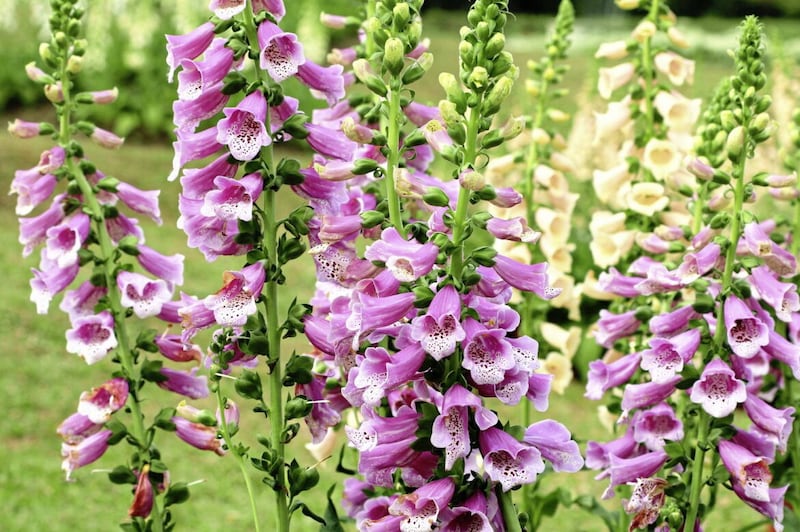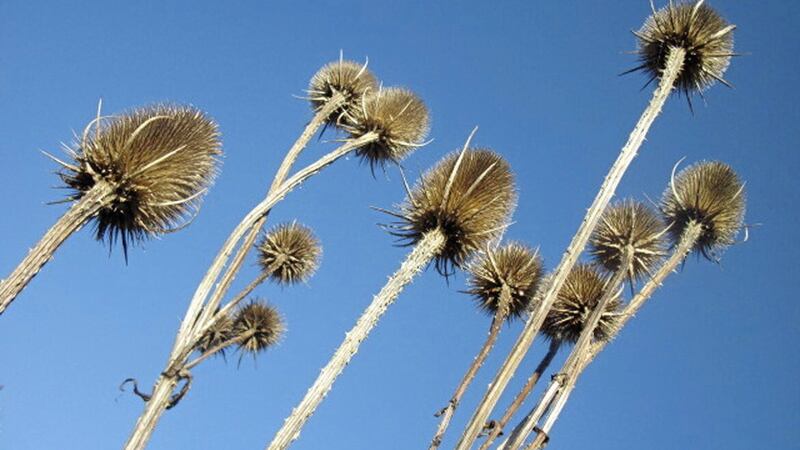WHAT with mail order catalogues offering daffodils in flower and garden centres brimming with ready-grown plants, it’s often easy to forget the role nature plays in bringing life to our gardens.
Every year, hundreds of young seedlings magically appear in my garden. Some spring from seed sown from packets designed to deliver a specific result. Others are the offspring of a previous generation introduced in past years, while just occasionally a plant appears whose provenance I’m unable to identify, as if from nowhere. The garden's always evolving.
Seeds, especially those of plants classified as 'weeds', are adept at moving around whether it's on the wind, using a bird's digestive system or being transported in soil. Nettles, dockens, creeping buttercups, alexanders, bindweed – all these are interlopers of sorts that were either in the ground before I arrived, or were brought in inadvertently.
The self-seeders are a different category entirely. Foxgloves, evening primrose, mullein, teasel, Aquilegia and honesty, all have their own distinctive appeal at varying times of the year. They will replenish themselves annually if not policed too eagerly.
Once these kinds of plants were spurned by many gardeners, who regarded them as disrupting their carefully crafted colour schemes, formal and rigid in appearance. But attitudes are slowly changing. First it was the designs that were more naturalistic then the plants followed.
Awareness about the biodiversity crisis and an appreciation of the many negative environmental impacts of commercial gardening, have bred a new generation of gardeners who are averse to all things that aren’t indigenous.
It’s an attitude typified by Wexford-based Mary Reynolds, who featured in these pages in December. She no longer has time for cultivars and non-natives, and instead advocates gardening using solely Irish flora – the sort that's naturally compatible with the island’s birds, insects and mammals.
Even the RHS, once a bastion of conservatism and traditional gardening values, has modified its take on weeds, hopefully adapting its nomenclature accordingly – referring to them as wild flowers. In a similar vein, it announced last year that it would no longer class slugs and snails as pests.
The RHS has recently gone so far as to urge gardeners to record the “weeds” that pop up their gardens, because they could have stumbled on a rare plant. Gemma Golding, the RHS's senior ecologist, wants gardeners to look for interesting species (including fauna) and submit them to the iNaturalist app for scientists to analyse.
One of the world's most popular nature apps, iNaturalist helps identify the plants and animals around us. A joint initiative by the California Academy of Sciences and the National Geographic Society, the app connects an ever-growing community of more than 400,000 scientists and naturalists, who pool their knowledge, so collectively we can learn more about nature. By recording and sharing observations, contributors help create a bank of research quality data for scientists working to better understand and conserve the natural environment.

“Definitely take pictures of new and unexpected plants – sometimes known as weeds – in your garden,” Golding told the Guardian. “Take a picture and send it in so we can identify it. Once it’s ID’d you can find out a bit more about it because now you know what it is, and you can get a bit of understanding of what it is. Is it important, is it something a bit rarer? Are you really fortunate to have this plant in your garden?”
The aim of the exercise is two-fold, in that it helps science and gives the gardener a greater appreciation of nature – and the stuff we once banished.








